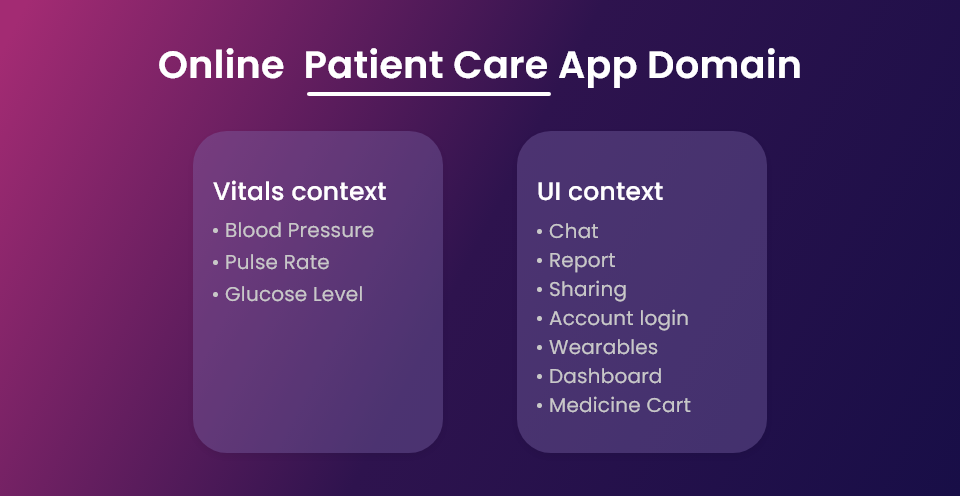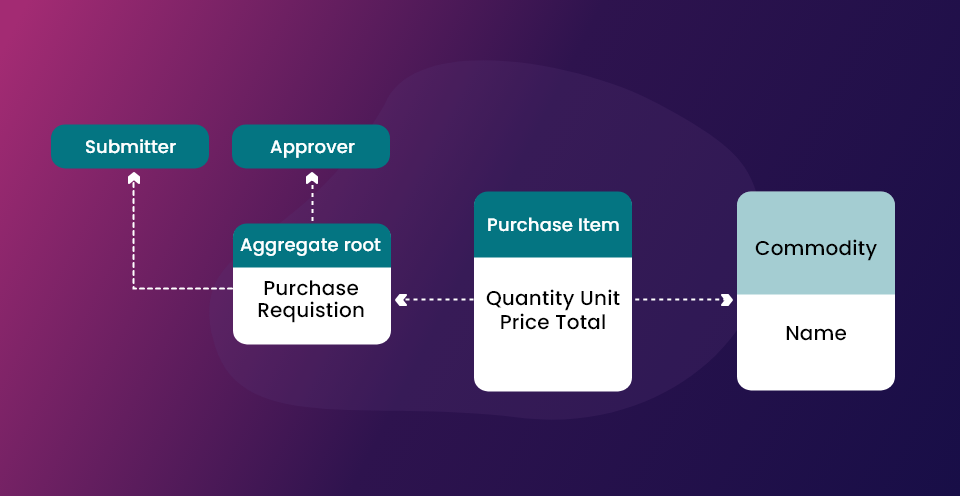In the dynamic world of software development, architects and engineers constantly strive for powerful and adaptable architectural models capable of handling intricate business demands. Domain Driven Design (DDD), is a potent approach renowned for constructing software systems intricately attuned to the unique requirements and challenges of businesses.
What is Domain Driven Design?
Domain Driven Design (DDD) is a software development approach where the primary focus is on building conceptual models that align closely with the business requirements of a specific domain. These models provide the foundation for software systems, offering a deeper understanding and accurate representation of domain logic.
Core Features of DDD
Ubiquitous language
Domain Driven Design encourages communication between developers and domain experts using a shared vocabulary known as the “Ubiquitous Language.” This language promotes efficient communication, ensuring that all stakeholders understand and contribute to the software design process. The Ubiquitous Language is consistently used across the development cycle, including documentation and code.
Bounded contexts
In large domains, it is difficult to create a unified model that suits all contexts. DDD suggests breaking down the domain into smaller, well-defined contexts. These bounded contexts allow teams to develop separate system components independently, maintaining consistency within each context.

Aggregates and aggregate root
In DDD, an aggregate is a cluster of related domain objects treated as a single unit. Aggregates encapsulate entities and value objects, ensuring consistency and maintaining transactional boundaries. An aggregate root is the main entity within an aggregate, serving as the entry point for accessing and modifying its internal components. The aggregate root ensures the consistency and integrity of the aggregate as a whole.

Domain events
Domain events are significant occurrences in the business domain that are important for the system’s state. For instance, a domain event could represent actions like a customer placing an order or a product being shipped. Domain events carry relevant data, including a timestamp, and cannot be changed or ignored once created. They can be shared via message brokers or event stores for other services to consume.
Entity
Entities are domain objects with unique identities that persist over time, such as a customer account number. These entities may share identifiers across contexts, but they may have different implementations depending on the context.
Value objects
Value objects are immutable, self-contained objects that lack identity and are defined solely by their attributes. Examples of value objects include money, date, and address. Unlike entities, value objects are defined by their attributes rather than by a unique identity.
Implementation Phases of DDD
Implementation of DDD can be broken down into two phases.
Strategic phase
The strategic phase of DDD involves taking a high-level view of the domain to identify main concepts, relationships, and contexts. This phase includes analyzing business rules, creating bounded contexts, and aligning the software design with the business’s goals. Tools like domain storytelling, event storming, and context mapping can help developers and domain experts collaborate and avoid unnecessary complexity.
Tactical phase
The tactical phase dives deeper into domain modeling, where specific behaviors, rules, and patterns are implemented. The building blocks of DDD, such as aggregates, domain events, and value objects, are used to create models for sub-domains. This ensures that the codebase remains clean, consistent, and testable while reflecting the domain’s complexities.
Benefits of Domain Driven Design Architecture
DDD offers a number of benefits, including:
Improved communication and collaboration
DDD fosters better communication and collaboration between developers and domain experts. The shared understanding of the domain, achieved through the Ubiquitous Language and domain modeling, ensures that the software is designed to meet real business needs.
Better software design
Domain Driven Design enhances software design by ensuring the domain is accurately represented in the software system. This leads to easier-to-understand, maintain, and evolve software, reducing the risks of overcomplicating or misrepresenting the business domain.
Increased flexibility and agility
DDD promotes modular, loosely coupled software that is more flexible and agile. This architecture allows developers to add new features, modify existing ones, and adapt to domain changes with minimal disruption.
Improved quality and reliability
By emphasizing domain model testing and validation, DDD leads to better quality and reliability in software. Early identification and resolution of issues during the development process help save time and reduce costs in the long term.
Conclusion
Domain Driven Design (DDD) stands as a powerful approach for building software systems that are finely attuned to the specific needs of a business domain. By leveraging the Ubiquitous Language, bounded contexts, aggregates, and domain events, DDD helps developers create scalable, maintainable, and adaptable systems. The strategic and tactical phases of DDD ensure that software solutions reflect both the complexity of the domain and the business’s core objectives. Embracing DDD not only improves collaboration but also empowers software to align seamlessly with the dynamics of the business it serves.
